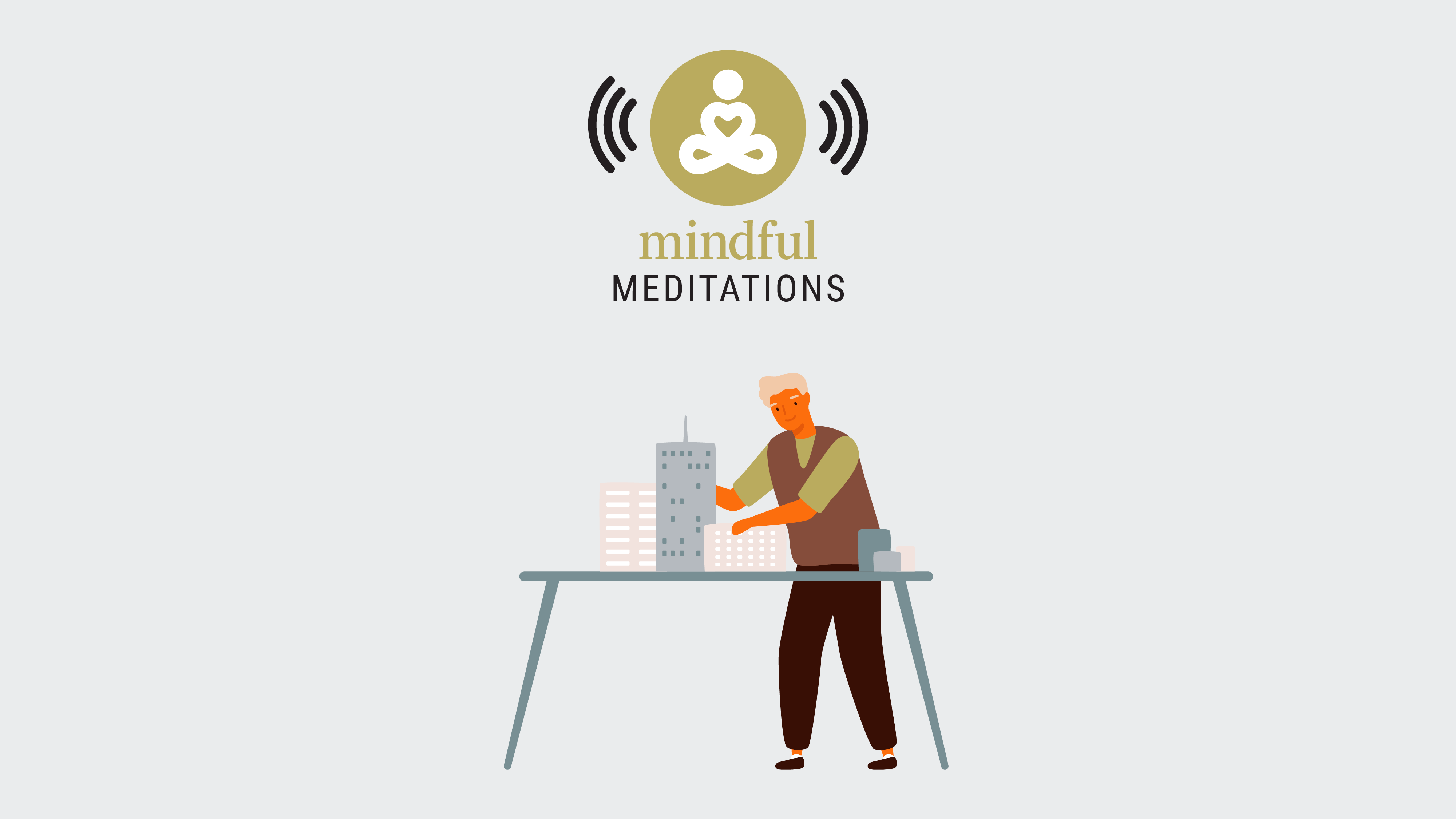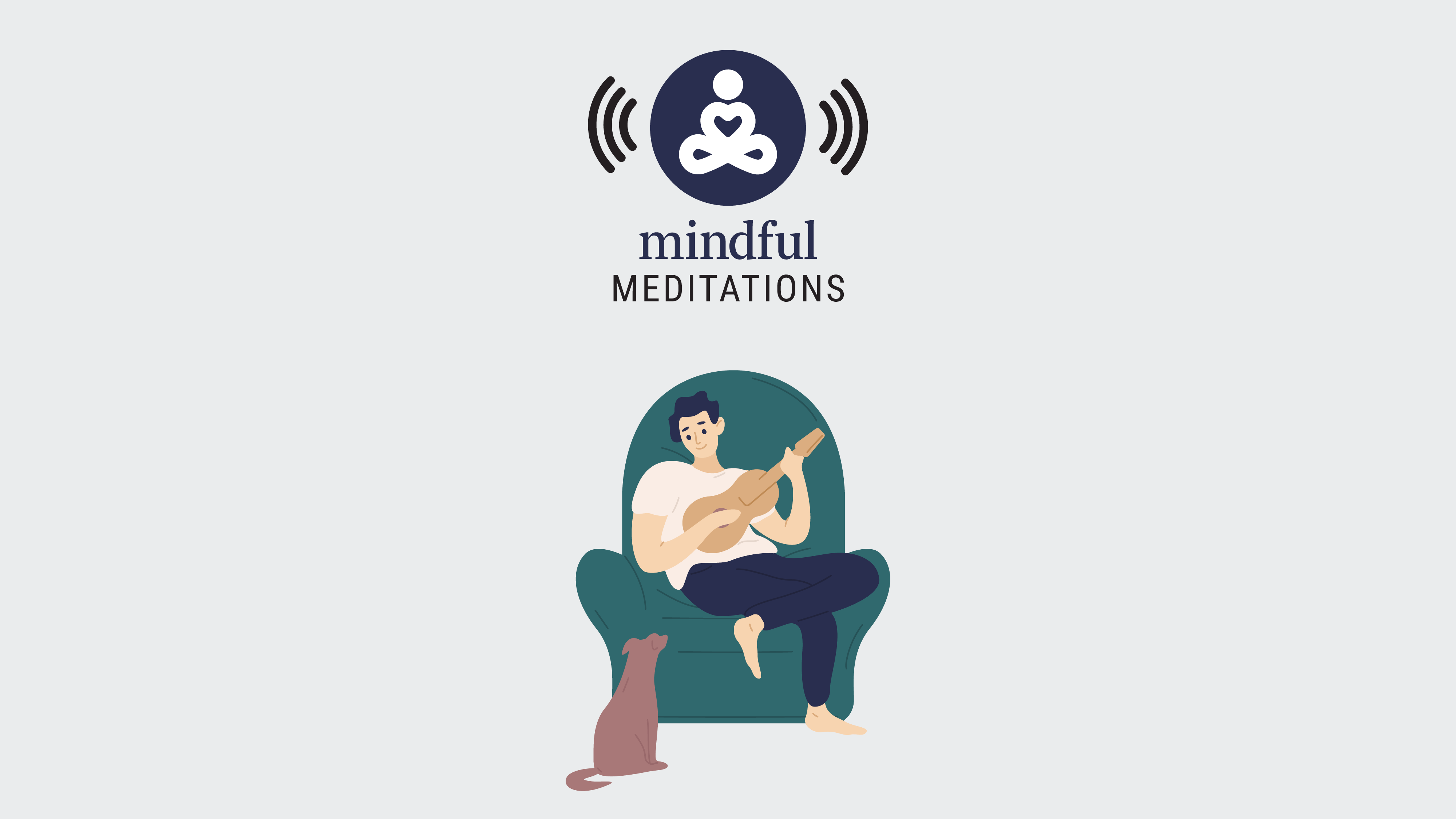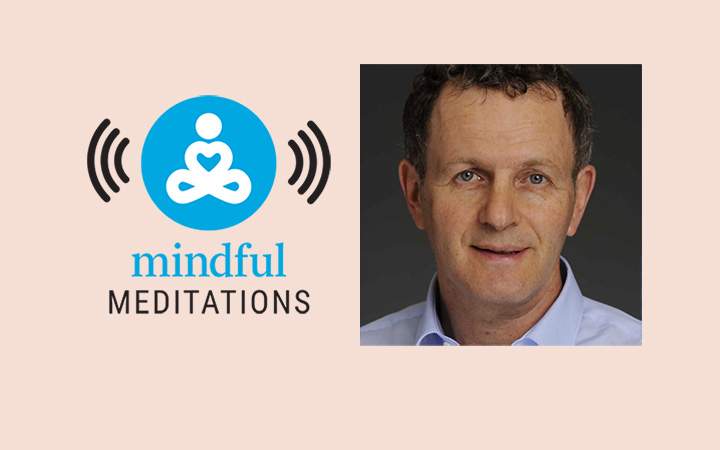In this class, we’ll continue on our journey of exploring emotions, and this time we’ll focus on anxiety. This is a pretty common emotion and experience in our modern world. I know it is for me. I work primarily with teenagers, and over the past
Before we get down to our practice with anxiety, let’s revisit some of what we talked about last in the last class: remembering first to find something that’s neutral or pleasant in our experience before we dive right into a difficult emotion. This is particularly important when we’re working with anxiety, as it’s an emotion that can often feel overwhelming in the felt sense in our bodies. Sometimes the act of turning our attention to things such as the breath or the sensations in our body can heighten anxiety. And in some cases, this can turn into a panic attack. So, when it comes to practicing with this emotion, we want to first ground ourselves, notice what else is happening and get some space around our experience. Then, once there’s a sense of more common space, we can approach and explore anxiety directly.
I call this meditation A.W.E. for “And What Else?” Think of it as a cue to ask yourself “And What Else is happening?” Another handy mindfulness acronym is S.T.O.P., which stands for Stop, Take a breath, Observe, and Proceed. I find it’s helpful to insert A.W.E. in the middle of S.T.O.P. It works like this: Stop, Take a breath, Observe, at which point maybe I notice I’m feeling anxious. So then I can ask myself, And What Else is happening? Because even if we’re in the midst of anxiety, it’s not the only thing going on. And building space around anxiety is precisely what we need to be able to recognize that.
So that’s what we’ll practice today. Let’s begin.
Create Space Between You and Your Anxiety
Create Space Between You and Your Anxiety
- When you’re ready, come into a comfortable seated position. Let’s take some breaths here. Find your ground by feeling your feet on the floor beneath you. Feel your body touching the chair or cushion you’re on. Really allow yourself to settle into this: feel gravity, and release your weight toward gravity. Let’s take a few deeper breaths now. If you are already feeling anxious, it can be helpful to really extend the exhale. Take a nice, long inhale, then very much emphasize the exhale.
- Explore how you’re feeling right now. If you’re feeling anxious right now, it’s a great opportunity to practice. But if not, bring to mind a time recently when you felt some kind of fear, anxiety, worry or agitation. Recall the situation or conversation. Again, as with all of these meditations, let’s start with a level 3 out of 10—maybe you were late to a meeting or you had to have a difficult discussion. Just remember that event, and as you do, you might start to notice anxious thoughts emerging in your mind. You might also start to notice some related sensations in your body.
- Open your attention wide. Before we turn towards the anxiety more fully, let’s first open our attention wide. Here’s where we can use A.W.E. (And What Else?) Just notice. You may be feeling anxiety right now, but let’s direct our attention away from that and actively explore our senses.
- Open your eyes and look around. If your eyes are closed, I invite you to open them to look around the space you’re in. Simply orient yourself. And now notice three things that you see in the space around you. They can be very neutral or even pleasant things—flowers, an image. Simply describe them to yourself in your mind: the colours, shapes, forms.
- Turn your attention to the sounds around you. Once you’ve noticed three things visually and described them to yourself, turn your attention to hearing. Allow your attention to settle on the sounds around you. Listen for three different sounds; they can be near or far. Emphasize pleasant or neutral sounds. And, again, describe them to yourself: notice the vibration, the tone, how they arise and then pass.
- Now let’s turn our attention to taste. This might be a little more challenging, but just notice: can you detect any flavour in your mouth? Maybe something you ate before starting this practice? Toothpaste? Just notice what it’s like to taste.
- Now turn your attention to your sense of smell. You might take in a deeper breath here. Just notice: can you detect any scent in the space around you? Notice how they can shift and change with each breath.
- And finally, let’s move to the sense of touch. Beginning on the outer surface of our skin, feel the contact with the chair or the ground. If your hands are touching or resting against your body, just feel that sensation. It’s very simple: what do you notice when you turn your attention toward your hands touching? Feel the contact of your clothes with your body. Feel the temperature of the air on your skin. What can you notice?
- If you have the energy and some space now, turn your attention toward the felt sense of anxiety. If you feel the need for more space at any time, simply keep turning your attention outward: the sounds, the sights—wherever it feels calming and grounding for you to attend in your senses. When you do feel ready to explore, turn your attention to the felt sense: How do you notice anxiety? Where do you feel it in your body? I feel it a lot in my chest, and sometimes in my solar plexus. I feel it in the front of my body. Take a breath and notice where you feel it. Maybe it’s in your belly? See if you can notice the details, too: is it throbbing or tingling? What’s the energy like? Within the sensation of anxiety, does it feel like there’s a lot of movement? Does it shift and change as you pay attention to it?
- Can you gently relax around the feeling of anxiety or fear? Think of the rest of your body holding this feeling with a lot of care. Pay close attention, explore, be curious: How does anxiety show up? How is it shifting? If at any point it becomes overwhelming or you get lost in thinking and find you’re unable to stay with the sensations, simply go to And What Else: notice the sights around you. Notice the sounds. Feel the ground.
- If you are able to pay attention to this sense of anxiety, simply noticing it, let’s drop in a question (as we did with anger last week). Staying with the felt sense of this fear, anxiety, worry or agitation, just ask: What do you need? What do you want me to know? What are you trying to offer me? Just see what answers, images, words arise here. We’re asking ourselves here: What do I need?
- As we close out the meditation, see if you can commit to doing something to address that need you’ve identified. Alternatively, simply remember the information that has arisen for you during this practice. And now, if you’re ready, take a few deeper breaths. Soften your body slightly. Feel the seat under you, the ground under you.
Thank you for practicing with me. If you find yourself feeling anxious at any point, try to recall this practice and ask yourself: And What Else is happening? It can take as little as 30 seconds. What can you see, hear, taste? Feel your feet; build in some space. And then maybe you can for a moment touch in, holding with care this feeling and seeing what it needs. See if any wisdom comes out of that, and see if you can respond from a place of connection with the emotion, rather than from a place of trying to run away.
Explore Session #3
Explore The Wisdom Behind Feelings of Longing
When we sit with our everyday feelings of longing, and get to know them on a deeper level, often we may find what it is we actually want.
Read More
More mini-Courses
Calm Your Mind with Zindel Segal
Zindel Segal explores the 3-Minute Breathing Space practice to develop your ability to ground yourself, return your attention to the present, and fully find yourself at any moment.
Read More





